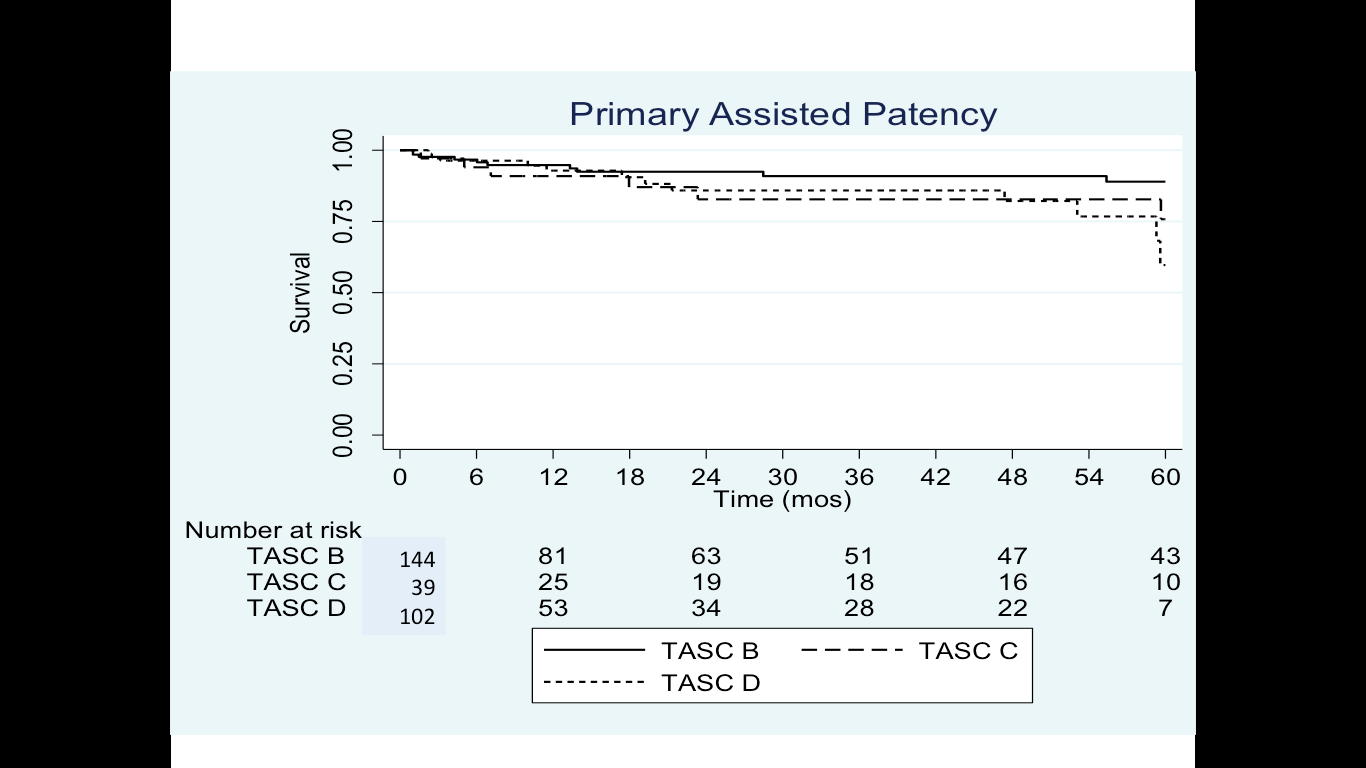Back to Annual Symposium Program
Long term outcomes of endovascular interventions for femoropopliteal disease
Robert I. Hacker, MD, Rabih Chaer, MD, Donald Baril, MD, Michel Makaroun, MD, Luke Marone, MD.
University of Pittsburgh, Pittsburgh, PA, USA.
Objective: Short-term results of endovascular intervention for femoro-popliteal lesions have been extensively reported, however, there exists a paucity of long-term objective data related to outcomes of these interventions. We sought to characterize these long-term results including patency, limb salvage and mortality.
Methods: From May 2003 to July 2009 all patients who underwent endovascular balloon angioplasty and/or stenting for TASC II B, C and D lesions were identified in a retrospective fashion. Patient demographics, clinical characteristics, arterial noninvasive data and angiographic anatomic data were evaluated.
Results: A total of 285 limbs in 188 patients (mean age 74, range 69-94) were treated. Lesion distributions by TASC II classification B, C and D were 144 (50.53%), 39 (13.68%) and 102 (35.79%) respectively. Critical limb ischemia (CLI) was the indication for intervention in 43.5% of patients. Kaplan Meier five year primary and primary assisted patency rates based on TASC II classification were B: 56.0%, 88.9% C: 47.0%, 75.9% D: 34.2%, 59.7% respectively (p=0.634 and 0.128). Diabetes was the sole adjusted predictor of loss of primary patency (HR 1.5, 1.02-2.45, p=0.04). Re-interventions to maintain patency were required in 27.1% of TASC II B, 38.5% of TASC II C and 22.6% of TASC II D lesions (p=NS) and mean time to re-intervention based on TASC II classification B, C and D of 26, 22 and 20 months (p=NS). 17 patients were converted to open revascularization and two patients underwent major amputation during follow up. Mortality at 5 years was 48.7%. CLI as indication for intervention was the sole adjusted predictor of death (HR 2.3, 1.47-3.60, p<.001).
Conclusion: Long-term patency of endovascular interventions for complicated femoro-popliteal lesions are acceptable across TASC II classification and are associated with excellent limb salvage. Mortality in this patient cohort is significant with CLI being identified as the sole predictor of death.

Back to Annual Symposium Program

|


